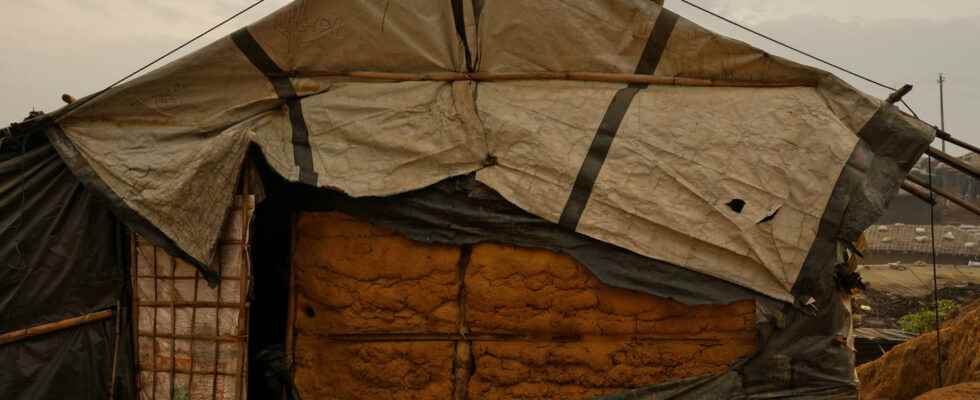Cyclone Sitrang raged all night. On October 25, it fell on Cox’s Bazar, in the south-east of Bangladesh, tearing off the roofs, uprooting the trees, but sparing the most populated refugee camp on the planet. The bamboo huts, where nearly a million Rohingya Muslims who fled Myanmar (the official name of Burma) are crammed together, could have been swept away like wisps of straw.
From Cox’s Bazar, the district capital on the shores of the Bay of Bengal, it takes an hour’s drive to reach Ukhia, the entry point to the main Kutupalong camp, surrounded by fences and watchtowers. The horizon is lined with huts and tarpaulins, criss-crossed by brick-red alleys. It was once a forest area, a migratory route for elephants. Trees were felled to build shelters and provide fuel. In these places more than 760,000 refugees survive, in promiscuity and extreme destitution.
For the majority of them, exile began on August 25, 2017, when the Tatmadaw, Burma’s regular army, led an operation described by the United Nations as “ethnic cleansing” against the Rohingya in northern Rakhine State (renamed Rakhine by the Burmese regime). To escape the fires, massacres and rapes, nearly 800,000 Arakanese then crossed the Naf River which separated them from Bangladesh, to join some 200,000 other Rohingyas, who had arrived during previous waves of repression. : forced evictions in 1978 during Operation “Dragon King”, under the pretext of a census; operation “Clean and Beautiful Nation”, from 1991 to 1992, aimed at driving out “foreigners” from this same region; pogroms in 2012…
Ostracized, persecuted, deprived of their citizenship since 1982, this million refugees do not have nothing left: no house, no land, no legal recognition on either side of the border. They are illegal immigrants in Myanmar and undocumented in Bangladesh, forming today the largest stateless community in the world.
Law void
The day before Cyclone Sitrang, warning flags were hoisted. The loudspeakers had spat out warnings. In addition to cyclones, the region is exposed monsoon rains, which lead to landslides, and heat waves, which cause devastating fires, like that of March 2021, which left 45,000 refugees homeless. Despite these dangers, only temporary constructions – made of bamboo, rope and tarpaulin – are tolerated. Dhaka has banned the word “house” from its vocabulary , imposing the terms “refuge” and “shelter”. The nuance is not only semantic. Bangladesh is not a signatory to the 1951 UN Convention relating to the Status of Refugees, although the principle of non-refoulement is generally respected. This legal void allows it to prevent the Rohingya from integrating into society by prohibiting them from free movement, work and access to education.
You have 77.69% of this article left to read. The following is for subscribers only.
